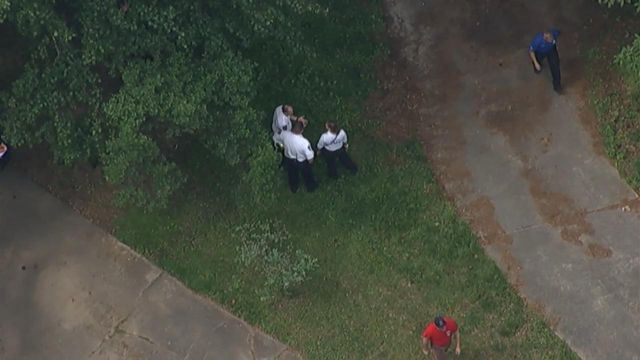NC schools aren't preparing students to enter workforce, report says

North Carolina isn’t preparing enough high school students or adults to work in the state’s growing industries, according to MyFutureNC, a nonprofit that focuses on the state’s educational attainment goals.
Whether enough North Carolinians are prepared to work can influence companies' relocation or expansion plans in the state.
North Carolina has 1.2 million people ages 25 to 44 who do not have a certificate or degree, compared to nearly 1.6 million people in that age group who do, according to MyFutureNC’s annual report, presented Monday at an event with legislative, education and business leaders.
The state’s goal is to have 2 million people with a certificate or degree by 2030 — a figure some believe will likely need to be adjusted higher, with the pace of the state’s economic growth.
“We simply don’t have enough students that are going to make it to and through to get to 2 million,” Cecelia Holden, president and chief executive of MyFutureNC, told the gathering.
MyFutureNC is asking for two policy changes to improve outcomes for students: Requiring annual career-planning for all middle- and high-school students and providing funding for certain job training at no cost to adults who qualify. That type of job training would be short-term, and training that wouldn't typically qualify for financial aid at a college.
Lawmakers echoed the need to ensure the state’s educational system is aligned with industry needs.
House of Representatives Speaker Tim Moore, R-Cleveland, said students need skills and vision for jobs that don’t exist yet. Already-trained workforce is the top concern for companies, he said.
Rep. Donny Lambeth, R-Forsyth, also noted the practical challenges facing colleges for existing careers, such as college nursing programs that don’t have enough faculty for the number of qualified applicants they’re getting.
Gov. Roy Cooper spoke for several minutes, arguing to fund more educational opportunities for students, starting before pre-kindergarten.
People need to earn more money to work in education, Cooper said, especially in early childhood education, where the median income is $20,000 per year.
Cooper railed against legislative efforts to cut taxes that he said benefit too many people who don’t need cuts and would deprive the state of funds. Businesses have been moving to the state under higher tax rates, attracted to an educated workforce, he said.
“We’ve got to stop with cutting taxes for the wealthy,” Cooper said. “We’ve got to stop. The math does not add up.”
Cooper thanked lawmakers for several efforts, including investments in higher education and grants. He thanked businesses and others who have called for more early childhood education, community college and university investments, grants and other work.
“Business people, you also know you’ve got to pay for it,” he said.
Holden’s group, myFutureNC, was formed in 2019 after first being a commission that worked with the state and business groups. The group aims to help ensure students leave high school prepared for college or a career. The group is also focused on reaching adults without degrees or credentials or who need be retrained for a new career.
Barriers to training are often the cost of continued education and sometimes the cost coupled with not having a plan.
About 139,000 of the state’s 16- to 24-year-olds aren’t in school and aren’t working, a figure Holden said includes some people who have graduated high school.
Holden describes the state’s workforce education using the term “leaky pipeline” — once people aren’t legally required to go to school anymore, they drop out of the pipeline along the way, starting in high school.
“It's not like, 'If you build it, they will come,'” Holden said. “You've got to make sure that you're encouraging students to come back to the classroom. Affordability is a critical part of that. The other part of it is speaking to the career plans. If students aren't on track, then what you end up with, we’ve got 9,500 students who drop out of school every year. And so our goal would be to encourage students to see the vision for what education really can bring to them. And then to keep them on track.”











